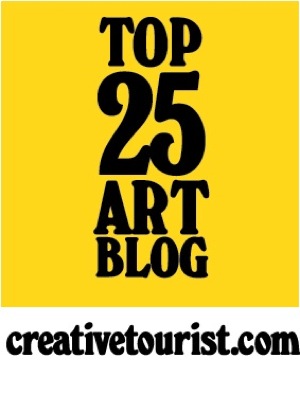
Following on from yesterday's map-themed post, I thought I should mention the British Library's current exhibition, Magnificent Maps, and in particular one of the works in the show, Steven Walter's The Island (see detail above).
Magnificent Maps explores the history of maps from 200 AD to the present, presenting works in the context of specific settings that range from the state room to the school room. This rich and rigorous exhibition investigates the different ways that the world has been represented and recorded in the form of maps, as well as their various functions - as works of art, propaganda pieces, educational tools, expressions of local pride, tools for indoctrination, or ways of recording newly-discovered terrain.
There's a huge amount to look at here - almost too much to take in on a single visit. The works themselves are enormous and reward careful examination - not simply a process of passive viewing, but in fact more active map-reading, I suppose. However, I have to admit that much as the historical works in this show are beautiful and intriguing, for me it was the smaller number of contemporary maps that were the most inspiring. Perhaps this is simply because these are artworks first and maps second - less cartographic tools, concerned with the mapping of specific topographies and documenting land ownership, and more interested in exploring the territory of the imagination.

Grayson Perry's Map of Nowhere (above) is a good example. Inspired by the symbolic medieval 'mappa mundi', and in particular the Ebstorf Map of 1300, this is a satirical and irreverent mapping of Perry's personal world view. The artist has stated that the work represents 'the beliefs, headlines, cliches and monsters that populate my social landscape' and 'reflects my concerns at the time, late 2007 - early 2008, about everything from class and turbo-consumerism to green politics and intellectual snobbery.'
Close by, Stephen Walters' The Island is another brilliant satire - this time making a point about the London-centric view of the capital as independent from the rest of the country, by ironically representing it as an island. Yet this fascinating hand-drawn map is also a celebration of London as a city, offering up an incredible wealth of local and personal detail. Here, the topography of London and its various areas is presented in densely-written words and symbols, rejecting conventional ways of mapping the city to focus instead on whatever the artist deems of personal interest - so above, Hackney comes with a label 'Spot the Artists', Shoreditch is renamed 'Sewer Ditch' and Iain Sinclair, The Krays, Barbara Windsor, and Jack the Ripper are all attributed to particular parts of the East London landscape. In this way, The Island reconfigures the city along highly personal lines (and so perhaps it's not ultimately so different to my own Google map below), creating an intriguing, entertaining and witty portrait of the contemporary city.
Magnificent Maps is showing at the British Library until 19 September 2010.
[Images: Detail from The Island by Stephen Walter, 2008; Map of Nowhere by Grayson Perry, via British Library and ArtNet]















0 comments:
Post a Comment